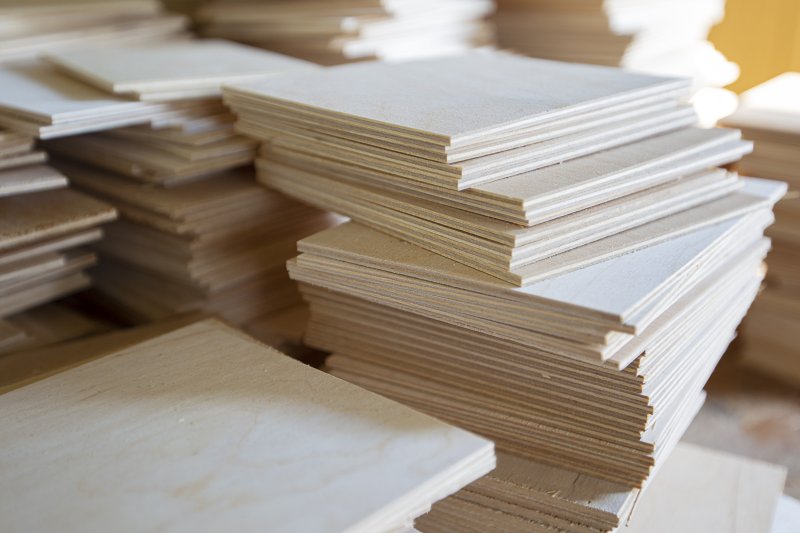Plywood: Structure, Production Process and Application Areas
Plywood is a building material created by combining thin wooden veneers with the cross-laying technique. It is produced by combining wood fibers in layers and compressing them. This structure is known for its durability, flexibility and machinability and is widely used in various industries. Plywood creates a stronger and more stable structure by minimizing the natural defects of hardwood boards. The structure of plywood usually has at least three layers, and in each layer the wood fibers are placed in different directions. This cross-laying technique ensures that plywood has a homogeneous structure, and its cross structure enables the material to gain higher durability and strength. Thus, plywood can have greater load-bearing capacity than other wooden materials.
Production Process of Plywood
The plywood production process involves a series of meticulously planned operations. First, wooden boards are cut and smoothed. The dimensions and thickness of the sheets are carefully determined in accordance with the requirements of the end product. This stage is critical for quality and stable plywood production. The sheets are then pressed and held together with special adhesives. In this step, the durability of the plywood is increased by creating a strong and consistent bond between the boards.
The next stage is the coating process. The boards are brought to the desired thickness and size and then processed with special coating materials. This coating process protects the surface of the plywood and increases its resistance to environmental influences while also providing an aesthetic appearance. Veneer is one of the finishing touches that make plywood a long-lasting and attractive building material.
All these steps ensure that plywood is produced in accordance with industry standards and results in a high quality, durable building material. Every stage in the production process is managed with quality control and precision, ensuring that the final product fully complies with the required standards.
Application Areas of Plywood
Construction Industry:
- Plywood is a material frequently used in flooring. It is especially preferred due to its durable structure and aesthetic appearance. Additionally, it adds elegance to the space by offering different color and pattern options.
- Plywood can also be used as wall covering. It is frequently preferred in modern and industrial style interiors. The natural texture of wood adds warmth and character to the space.
- Wood plywood is a material frequently used in roof covering. Thanks to its light weight and durable structure, it does not burden the roof and ensures long-term use.
- Plywood is a material used as formwork in the construction industry. Plywood panels used as molds during concrete pouring provide a smooth surface and help the concrete harden as desired.
Furniture Making:
- Plywood is a frequently preferred material in cabinet making. It offers flexible design options and allows cabinets to be produced in the desired size and shape.
- Plywood can be used on table tops and legs. Thanks to its light weight and durable structure, it creates a solid table structure.
- Plywood is a material frequently used in chair making. Thanks to its flexibility, it allows ergonomic designs and offers a comfortable sitting experience.
- Plywood is also a preferred material in the construction of shelves. It is generally used for indoor storage areas and creates a solid structure.
Interior Design:
- The processability of plywood provides a great advantage in the production of interior furniture and items. It can be cut, shaped and offers different design options.
- Plywood can also be used as a decorative element in interiors. It adds warmth and naturalness to spaces with its natural wood texture and various color options.
- Plywood panels provide an aesthetic appearance to interiors by offering various color and pattern options. It is frequently preferred in modern and minimalist style decorations.
Plywood has a wide range of applications for structural and decorative purposes. It is preferred in various industries, from the construction sector to furniture making. With its flexibility, workability and durability, it stands out as a material that can be used in many different projects.
